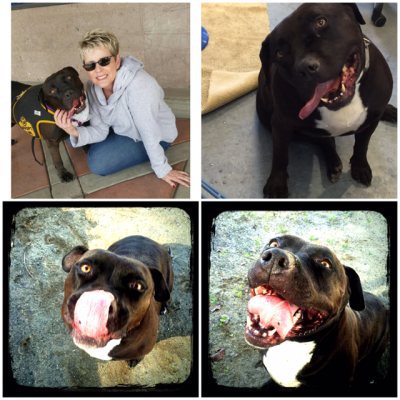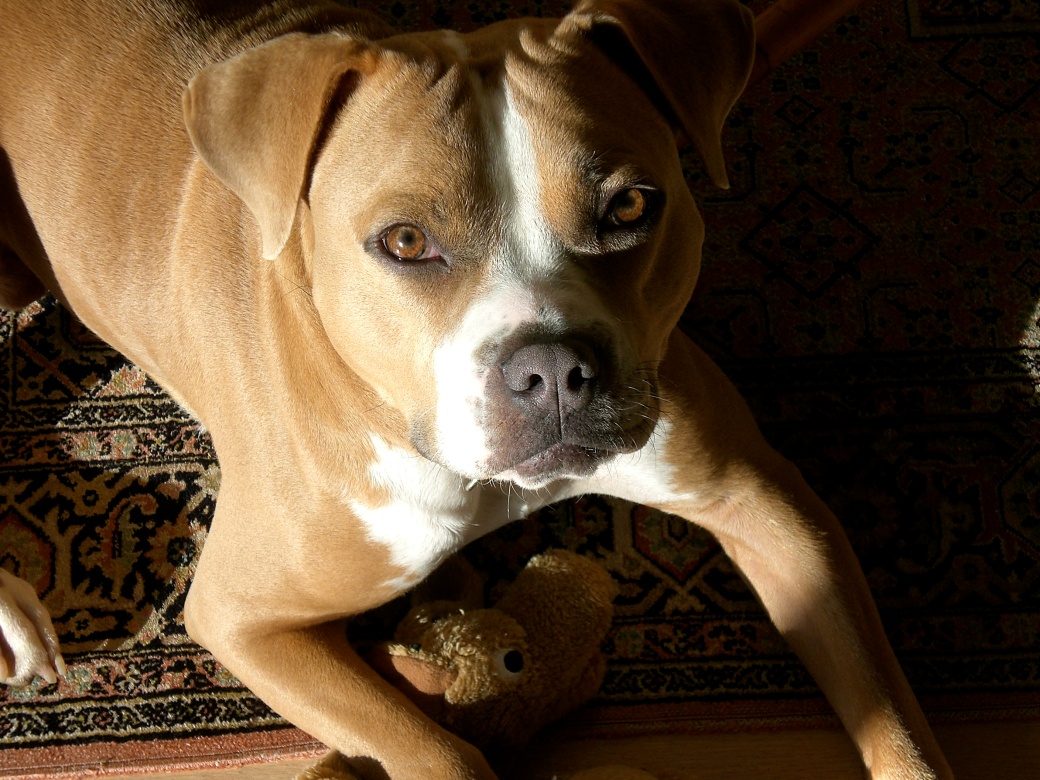 When we plucked Tanner from our local shelter just over nine years ago, we were left to guess his age. All we knew was that the big brown dog had been turned in by a Good Samaritan who found him huffing along on a busy road in Ventura County farmland, emaciated and exhausted. He couldn’t or wouldn’t tell us about the scars on his muzzle and belly but they hinted at a violent past, most likely as a failed fight dog. Hoping to cheat Time, we took a stab that he was around a year old, still a puppy with plenty of time ahead of him.
When we plucked Tanner from our local shelter just over nine years ago, we were left to guess his age. All we knew was that the big brown dog had been turned in by a Good Samaritan who found him huffing along on a busy road in Ventura County farmland, emaciated and exhausted. He couldn’t or wouldn’t tell us about the scars on his muzzle and belly but they hinted at a violent past, most likely as a failed fight dog. Hoping to cheat Time, we took a stab that he was around a year old, still a puppy with plenty of time ahead of him.
Our new addition was scared and scarred but right from the jump you could see that he had that intangible spark that separates really good dogs from the great ones. It took a little time for his true personality to assert itself, as he struggled with loud noises, raised voices and car trips that ALWAYS ended with a bout of vomiting. Even so, we respected his unique Tanner-ness and held fast to the belief that, with patience and love, he’d blossom into something truly special.
To speed his healing, Eugenie never took her hands off him. Wary at first, he came to crave her touch. To help us bond more quickly, we decided he should sleep beside us. Several times a week, I’d wake during the night and reach for my water glass only to spill it onto his massive, uncomplaining head. To spare him the indignity of my clumsiness, we moved his bed to the foot of ours. The new arrangement was great with the lights on, but getting up to pee in the dark meant tapping and tiptoeing between the dresser and the sleeping dog like Audrey Hepburn in Wait Until Dark. I complained a bit (hey, I’m Italian, I complain about everything) but, on my way back from the john, I’d stop to stroke his flank and adjust his blanket like any good dad.
With the benefit of affection and regular meals, our scrawny boy packed on the muscle. We congratulated ourselves on his startling transformation from starving, skittish stray to Best Dog Ever. The truth is that he came to us ready to wear. From day one, he was a low maintenance gentleman who never begged for food, soiled the house, or jumped on visitors or the furniture without permission. Beneath his buff exterior, was a ‘Mommy dog’ that adored other canines, especially puppies. No fan of drunks, he was terrified of cats, rabbits, goats, and our neighbor’s teacup pig Gumball. The sound of the trash truck turned him to Jell-O. The July 4th pyrotechnics left him quaking for days. True to his SoCal roots, he hated rain and the summer heat except if he was chasing gulls in the surf. 
Once he felt safe with us, there emerged a furry Rain Man who settled into a fixed routine – a long morning loop around our complex, always east to west, then an appetizer of steamed milk, breakfast, and some post-meal play with his stuffed ‘babies’. A lunchtime stroll – this one west to east – then a run at the beach or a romp at the park, dinner, cuddles, and a final nighttime circuit to check on his doggie neighbors. Like a politician running for office, he greeted everyone we met. And they returned the favor. When they heard the jingle of his leash or the clicking of his nails on the sidewalk, our neighbors and their pets would rush outside to spend a few minutes in the comforting presence of the ‘mayor’. Any change in our pattern, however, even a minor one like a cloudy day, brought a furrowed brow and a sullen lip. And God forbid we moved his bed or tossed a shredded toy.
99 % of the people who met Tanner loved him on sight, won over by his easygoing, affable nature, striking good looks, and those humongous eyes that seemed to bore into your soul. The other 1% we ignored, unless they offered pit bull slurs and prejudice. Then they were sent packing by Tanner’s less good-natured dad.
When the city opened a dog park near our home, it became his Shangri-La. Every afternoon, he’d sidle up to my desk and pepper me with dramatic moans and groans, insisting we ditch work and join the Four O’clock regulars – Lady, a gentle giant of a Dane, Bobby, a Welsh corgi motor-mouth with the temper of Tony Soprano, Magnus, a rollicking, prancing Irish setter, and Rocky, a mischievous, fun-loving frat boy disguised as a golden retriever. Having said hello to the gang, He’d have a joyous time walking the perimeter like a 4-legged sentry, or play fighting with the puppies, or tunneling under the fence, a habit that earned him the nickname ‘El Chapo’.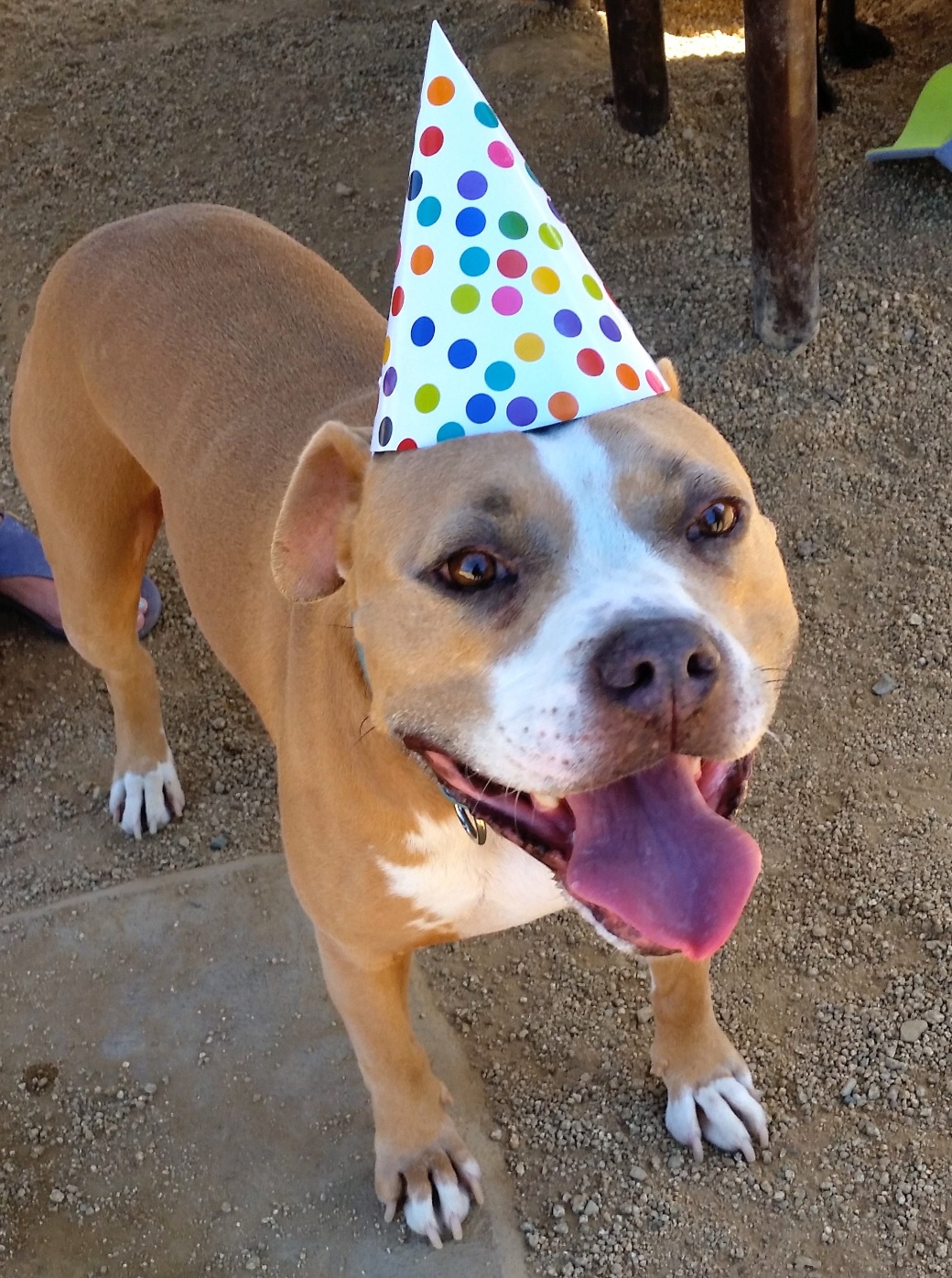
At the clang of the gate, our ‘greeter’ would break off digging and fly to welcome the newcomers. He was merely excited but it gave people pause to see a hulking pit bull bearing down on them, a maniacal grin plastered on his mug, bursting to meet (or eat?) their pets. Not that they were in danger, just the opposite. If dogs tried to bully him or assert their dominance, he’d roll away, tail wagging, like a canine Tai Chi master until they gave up and lost interest. Whenever other dogs threatened to fight, he’d rush between the combatants and gently shove them apart, reminding them to play nice.
He had the same effect on me. Until he came along, I’d given up on taming the roiling anger that had haunted me from childhood. But my desire to give Tanner a safe, loving home forced me to confront my issues in all their full-blown ugliness. Loving him so fully stretched my heart. Healing my dog helped me heal myself and became a better man.
My wife insisted that I share our story. After years of near misses in entertainment, I had little hope for our small, self-published book. As if by magic, doors flew open and people rushed to help us spread the tale of the damaged pit bull that saved the angry man who had rescued him. There were book signings, personal appearances, print and radio interviews, photo shoots, even a cable TV show. We headed cancer walks and the blessing of the animals. I enjoyed the attention but Tanner ate it up. Watching him preen and pose, it dawned on us that the shelter folks had lied. This was no pit bull; this dog was a publicity hound! Book sales were surprisingly good and we paid it forward, donating the profits to rescue charities. It was typical Tanner: showing us a fun life and while helping others.
If our adoption guesstimate was right, our baby was now past ten and very possibly older. Not that he acted like a senior citizen, far from it. He was still happy and full of life, overjoyed to run with the gangly pups at the park and to threaten the coyotes that stalked the hills behind our place.
The past six months, however, we’d noticed some alarming signs: more snow on his handsome tan face, less rumbling with his younger dog friends, a hesitation to fling himself on the bed for nighttime cuddles, opting for the easier climb up the bench. Sitting up on his haunches, paws extended like a Bombay beggar, demanding his pre-dinner dental bone had morphed into mere sitting. Instead of bounding up the stairs for our nighttime walk, he plodded to join us. If we stopped to chat with friends, he plopped down and waited patiently until we finished jawing. We hated to admit it but our indestructible boy had lost a gear; he was clearly slowing down.
So what if he was? Everyone ages. Look at me, with my graying hair and Rice Krispie joints, I’d long ago given up 10k races, spin jump back kicks, and late nights swing dancing. In ‘dog years’, Tanner and I were nearly the same age and I needed two days to recover from a spirited game of HORSE. We could accept the fact that our boy was growing old as long as he was happy and healthy and we were all together. Then came that Thursday when everything changed.
He was puppy play posturing with a young shepherd at the park when he yelped softly and pulled up short, his right rear leg dangling ominously. I was right there when it happened and I knew that ‘yelp’ wasn’t good, not from a wrecking machine that could plow full-speed into a metal 4 X 4 support beam and not so much as flinch. It meant a pulled muscle or a bulging disk or even a torn ACL, an injury common in pit bulls.
Eugenie is a skilled shiatsu masseuse who has spent decades successfully treating people, dogs, and even horses. As she probed his flank in the shade beneath the pavilion where the dog people congregate to gossip, we prayed that her magic fingers would unknot some nasty spasm and we’d all limp home together, a bit sore but otherwise okay. The massage didn’t help and so I scooped him into my arms – all 60 pounds – and carried him down the 40+stairs, across the lot to our car.
At the vet’s, they gave him a sedative and led him away for x-rays. We braced for word that he’d be facing orthopedic surgery and a long recovery in a townhouse that is nothing but stairs. The expense would crush our self-employed artists’ budget and getting him up and down would trash my back but we’d do whatever it took to get him well.
“Have a seat”, our vet said as he ushered us to a bench in the corner of the waiting room. His tone was gentle and kind. Too kind. Having checked Tanner’s leg, he ruled out musculoskeletal problems but a funky looking section of the x-ray near the dog’s right hip had him concerned. While he couldn’t be sure without further tests, it looked like bone cancer.
Bone cancer! The words pierced us like shrapnel. Bone cancer! Impossible! No way our strapping dog could be that ill without us knowing. Why just the week before he’d spent a manic hour at the park rumbling balls-out with one of his gawky adolescent playmates.
The vet offered to send the x-rays to an expert radiologist for a second opinion. As he rose to go, I choked out, “And if it is bone cancer, what then?” It was a dumb question I wanted to take back the moment I asked. “I’m afraid there are no good options. It’s a fast moving disease and very painful.” The rest was a blur.
Back home, we formed a litter with his blanket and carried him downstairs to his bed where he slept through the night, blissfully ignorant that our lives had come apart. Eugenie and I tossed and turned until dawn, buoyed by the slim hope that the radiologist would call and say it was all a terrible mistake, that our doctor had blown the call and that we were merely dealing with a bad sprain or a broken bone, or the onset of arthritis. Our aching hearts knew better.
About mid-morning, Tanner shook off his drug-induced lethargy and gobbled down a bowl of kibble and hamburger. I hauled him outside, hoping he’d ‘go’. He fixed those soulful eyes on me like I’d gone mad and laid down in the bushes, content to bask in the sun and snout the beach air.
That afternoon, Tanner’s doggie godmother came by to check on him. He popped up, tail beating the air, and limped to greet her. She had tears in her eyes and so did we. The clock inched forward as we waited for our vet to call with an apology and a reprieve. It was early evening when the phone finally rang. The jury was in, the verdict unanimous. It was time to say goodbye.
Next morning, after another haunted night, I called to make the arrangements. Fighting back sobs, I could barely force out the words. Things were moving at warp speed and our heads were reeling. We wanted, needed, more time, to hold him close and shower him with kisses and hugs.
As word leaked out, friends and neighbors called to ask if they could say ‘goodbye’. For two hours, Tanner entertained a stream of tearful guests and their dogs, gratefully devouring their treats and affection. He was a dog prince holding court for his loyal subjects. If he had any inkling of what lay in store, he hid it like a Vegas poker ace.
At noon, I cradled him in my arms and carried him outside for one last walk. As he was hopping down the sidewalk, a neighbor emerged with a pair of French bulldog puppies in tow. Although he wasn’t close to his old rambunctious self, he stopped to sniff the wiggly tubbies, gently nudging them, letting them know that this was still his fiefdom and there were rules to be followed. After all, he was till the ‘mayor’.
At the vet’s, we hunkered down on the floor with Tanner, stroking his chest and cooing his name, thanking him for all the love and memories of our glorious but too-brief time together as he quietly dozed off. And then he was gone.
Picture a jazz trio whose drummer has quit mid-set, struggling vainly to find their rhythm – that’s us since we lost Tanner. Every place we look, everywhere we go, there’s a shadow looming over us, an aching void that only time will dispel. It’s there in the empty rug where his bed once sat, in the bare cupboard shelf that held his food and treats, in the piercing, doe-eyed photos sliding endlessly across my computer screen.
It was a terrible but easy decision to send him off, sparing him from the certain agony that lay in store. So then why do we feel so awful? Perhaps it’s because we’ve run out of ‘firsts’ – first squeaky toy, first ocean swim, first raccoon sighting – leaving us with only pangs of what was and never will be again. No more pants stuffed with caches of liver treats, no more shirts with drool-smeared sleeves where he’d rest his head in the car, no more steaming milk for his breakfast like some barista at a doggie Starbucks, no blasting Vivaldi to drown out the crunch of the garbage truck, no more ditching 4th of July cookouts to huddle in the dark with our shell-shocked boy, no more play-fighting on the bedroom floor, no more savoring that sweet musty scent that was his and his alone, no more slurpy, sloppy, delicious pit bull kisses.
It’s a Faustian bargain we dog lovers make: We’ll pour our hearts and souls into our four-legged kids, knowing that, in all likelihood, they will leave this world before us. Even so, we jump at the chance to spend our days in the company of demanding, snoring, flatulent beasts that devour our time, attention, chicken parmigiana and sometimes even our vintage Air Jordans.
You could say that’s the price of being a dog owner, but you would be wrong, for it’s our dogs that own us body and soul. Ours did, and we wouldn’t have had it any other way.
I look forward to the day when I cuddle with Eugenie in the morning and she whispers in my ear that maybe, just maybe, it’s time to drive across the hill to the shelter where we found Tanner and audition his replacement. When that day comes, we’ll tell ourselves that the new boy will never hold a candle to his predecessor, that we’ll never love him like we did Tanner. That will be a lie. Because if there’s one thing Tanner taught us it’s that, when it comes to the love between man and dog, too much ain’t enough. 
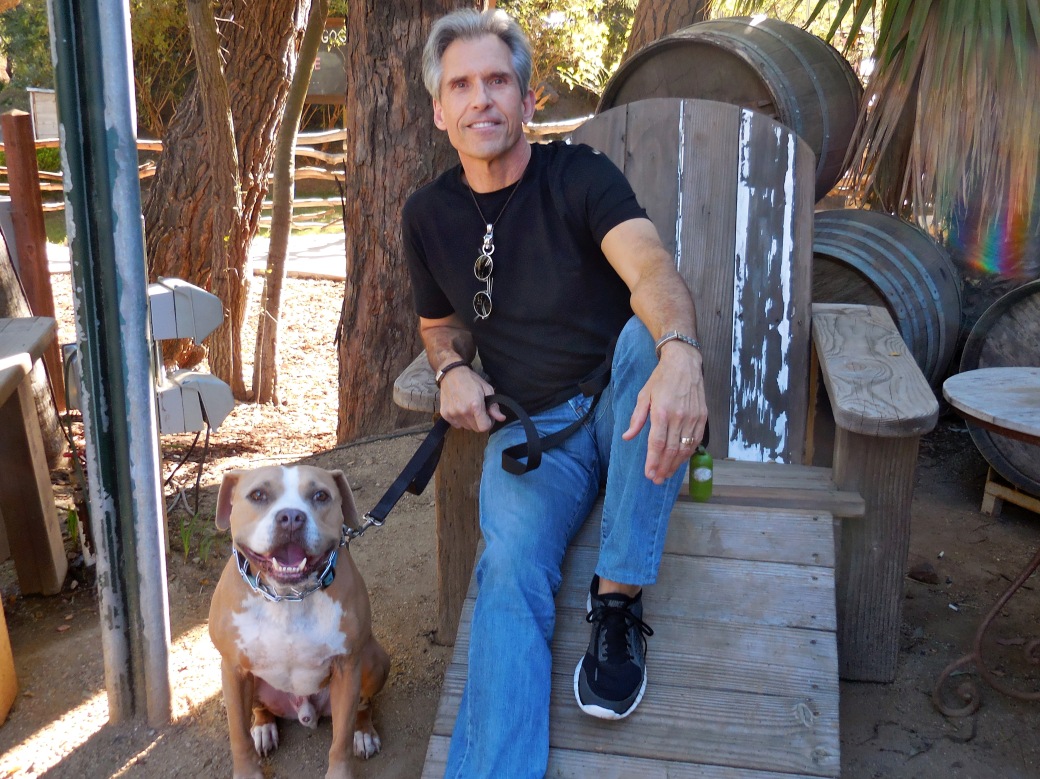






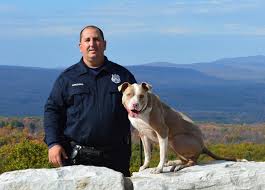



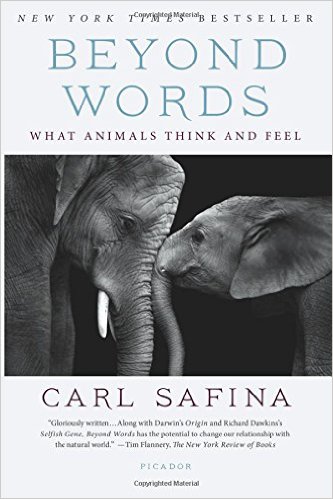
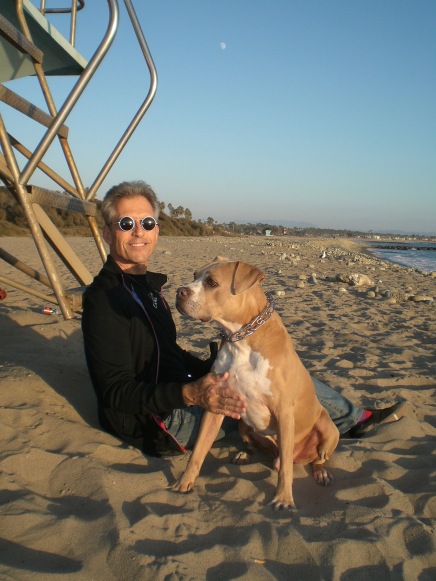

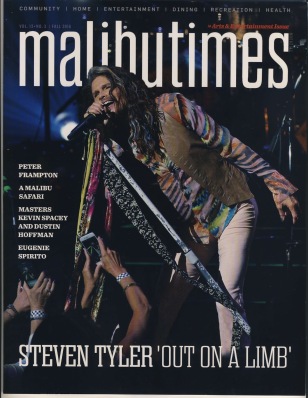
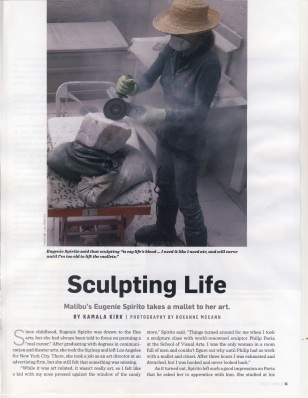



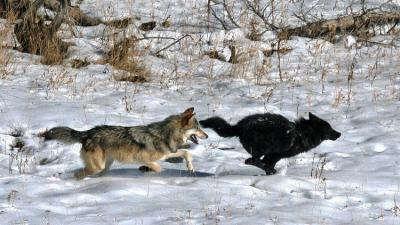
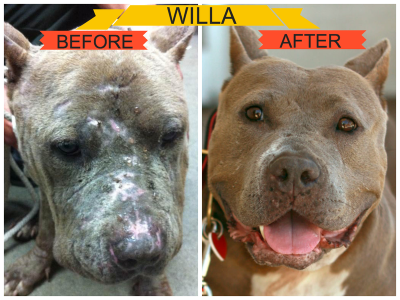
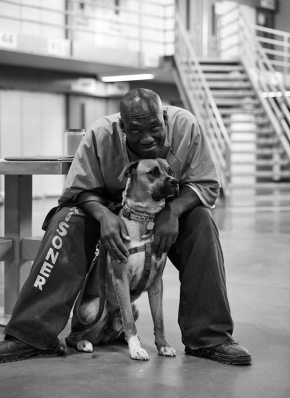







 Tanner sharing the love with our bro-in-law, Ernie, and nephew, Armand
Tanner sharing the love with our bro-in-law, Ernie, and nephew, Armand
